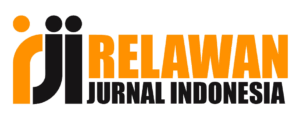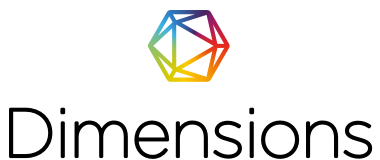Hubungan Status Gizi Ibu Nifas Dengan Produksi ASI
DOI:
https://doi.org/10.37824/jkqh.v6i2.2018.42Keywords:
Produksi ASI, Status GiziAbstract
Infant mortality is still high in Indonesia, 53% is caused by nutritional factors. Exclusive breastfeeding can reduce infant morbidity and mortality. Breastmilk production is less a complaint that is most often expressed by postpartum mothers and is the cause of exclusive breastfeeding failure. Nutritional status of postpartum mothers has an effect on breast milk production. This study aims to analyze the relationship between nutritional status of postpartum mothers and breast milk production. This research is quantitative research using primary data. The sample in this study were all primiparous mothers in April – May 2017 at Gunung Sari Health Center, who met the inclusion and exclusion criteria. The variables in this study were nutritional status measured from LILA and ASI production as measured by breast milk volume. Analysis using the Mann-Whitney and T unpaired tests. The results showed that there was no relationship between nutritional status and ASI production both seen at day 4 and 10. This is because baby suction is the main factor that influences milk production. Therefore, postpartum mothers are recommended to breastfeed the right way and every two hours in an effort to increase milk production.
References
[2] Badan Perencanaan Pembangunan Nasional. Laporan Pencapaian Tujuan Pembangunan Millenium di Indonesia. ISBN 978-979-3764-64-1, 2011.
[3] Kementerian Kesehatan RI. Profil Kesehatan Indonesia 2013. Jakarta: Kementerian Kesehatan Republik Indonesia. 2014.
[4] Mihrshahi S, Oddy WH, Peat JK, Kabir I. Association between infant feeding patterns and diarrhoeal and respiratory illness: a cohort study in Chittagong, Bangladesh. Int Breastfeed J. 2008;3(1):23-8.
[5] UNICEF. Improving Exclusive Breast Feeding Practices by using Communication for Development in Infant and young Child Feeding Programs. 2010.
[6] World Health Organization. Global health risks: mortality and burden of disease attributable to selected major risks: World Health Organization; 2009.
[7] Mekuria G, Edris M. Exclusive breastfeeding and associated factors among mothers in Debre Markos, Northwest Ethiopia: a cross-sectional study. International breastfeeding journal. 2015;10(1):1-7.
[8] Scott J, Colin W. Breastfeeding: reasons for starting, reasons for stopping and problems along the way. Breastfeeding Review. 2002;10(2):13.
[9] Sa'roni, Sadjiman T, Sja'bani M, Zulaela Z. Effectiveness of the Sauropus androgynus (l.) Merr leaf extract in increasing mother's breast milk production. Media Penelitian dan Pengembangan Kesehatan. 2004;14(3 Sept).
[10] Badan Penelitian dan Pengembangan Kesehatan Kemenks RI. Riset Kesehatan Dasar 2013. Kemenkes RI: 2013
[11] Irawati A, Triwinarto A, Salimar S, Raswanti I. Pengaruh status gizi ibu selama kehamilan dan menyusui terhadap keberhasilan pemberian air susu ibu. Penelitian Gizi dan Makanan (The Journal of Nutrition and Food Research). 2003;26(2).
[12] Supariasa, I.D.N. 2002. Penilaian Status Gizi. Jakarta: EGC.
[13] Corwin, EJ. Buku Saku Patofisiologi (Handbook of pathophysiologi). Jakarta: EGC; 2001.
[14] Tyson J, Hwang P, Guyda H, Friesen H. Studies of prolactin secretion in human pregnancy. Am J Obstet Gynecol. 1972;113(1):14-20.
[15] Riordan J, Wambach K. Breastfeeding and human lactation: Jones & Bartlett Learning; 2005.
[16] Anderson PO, Valdés V. A critical review of pharmaceutical galactagogues. Breastfeeding Medicine. 2007;2(4):229-42.
[17] Pujiastuti, N. Korelasi Antara Status Gizi Ibu Menyusui Dengan Kecukupan Asi Di Posyandu Desa Karang Kedawang Kecamatan Sooko Kabupaten Mojokerto. Jurnal Keperawatan, ISSN: 2086-3071
[18] Haryono R dan Setianingsih S. 2014. Manfaat ASI Eksklusif Untuk Buah Hati Anda. Yogyakarta: Gosyen Publishing.
[19] Soetjiningsih. Seri Gizi Klinik ASI Petunjuk untuk Tenaga Kesehatan. Jakarta: EGC; 1997.
[20] Corwin, EJ. Buku Saku Patofisiologi (Handbook of pathophysiologi). Jakarta: EGC; 2001.
[21] Bachelot A, Binart N. Reproductive role of prolactin. Reproduction. 2007;133(2):361-9.
[22] Penagos Tabares F, Bedoya Jaramillo JV, Ruiz-Cortés ZT. Pharmacological overview of galactogogues. Veterinary medicine international. 2014;2014.
[23] Freeman ME, Kanyicska B, Lerant A, Nagy G. Prolactin: structure, function, and regulation of secretion. Physiological reviews. 2000;80(4):1523-631.
[24] Waugh A, Grant A. Ross & Wilson anatomy and physiology in health and illness: Elsevier Health Sciences; 2014.
[25] Fitzgerald P, Dinan TG. Prolactin and dopamine: what is the connection? A review article. Journal of Psychopharmacology. 2008;22(2 suppl):12-9.
[26] Nishi A, Kuroiwa M, Miller DB, O'Callaghan JP, Bateup HS, Shuto T, et al. Distinct roles of PDE4 and PDE10A in the regulation of cAMP/PKA signaling in the striatum. The Journal of Neuroscience. 2008;28(42):10460-71.
[27] Nishi A, Kuroiwa M, Shuto T. Mechanisms for the modulation of dopamine D1 receptor signaling in striatal neurons. Frontiers in neuroanatomy. 2011;5.
[28] Freeman ME, Kanyicska B, Lerant A, Nagy G. Prolactin: structure, function, and regulation of secretion. Physiological reviews. 2000;80(4):1523-631.
[29] Riordan J, Wambach K. Breastfeeding and human lactation: Jones & Bartlett Learning; 2005.
[30] Tyson J, Hwang P, Guyda H, Friesen H. Studies of prolactin secretion in human pregnancy. Am J Obstet Gynecol. 1972;113(1):14-20.
[31] Anderson PO, Valdés V. A critical review of pharmaceutical galactagogues. Breastfeeding Medicine. 2007;2(4):229-42.
[32] Noel GL, Suh HK, Frantz AG. Prolactin Release During Nursing and Breast Stimulation in Postpartum and Nonpostpartum Subjects 1. The Journal of Clinical Endocrinology & Metabolism. 1974;38(3):413-23.
[33] Battin DA, Marrs RP, Fleiss PM, Mishell JR. Effect of suckling on serum prolactin, luteinizing hormone, follicle-stimulating hormone, and estradiol during prolonged lactation. Obstetrics & Gynecology. 1985;65(6):785-8.
[34] Guyton AC, Hall JE. Texbook of medical physiology. Elsevier; 2006.
[35] Bealer SL, Crowley WR. Stimulation of Central and Systemic Oxytocin Release by Histamine in the Paraventricular Hypothalamic Nucleus: Evidence for an Interaction with Norepinephrine 1. Endocrinology. 1999;140(3):1158-64.
[36] Baskerville TA, Douglas AJ. Dopamine and oxytocin interactions underlying behaviors: potential contributions to behavioral disorders. CNS neuroscience & therapeutics. 2010;16(3):e92-e123.
[37] Vacher CM, Frétier P, Créminon C, Calas A, Hardin-Pouzet H. Activation by serotonin and noradrenaline of vasopressin and oxytocin expression in the mouse paraventricular and supraoptic nuclei. The Journal of neuroscience. 2002;22(5):1513-22.
[38] Geddes DT. Inside the lactating breast: the latest anatomy research. Journal of Midwifery & Women’s Health. 2007;52(6):556-63.







